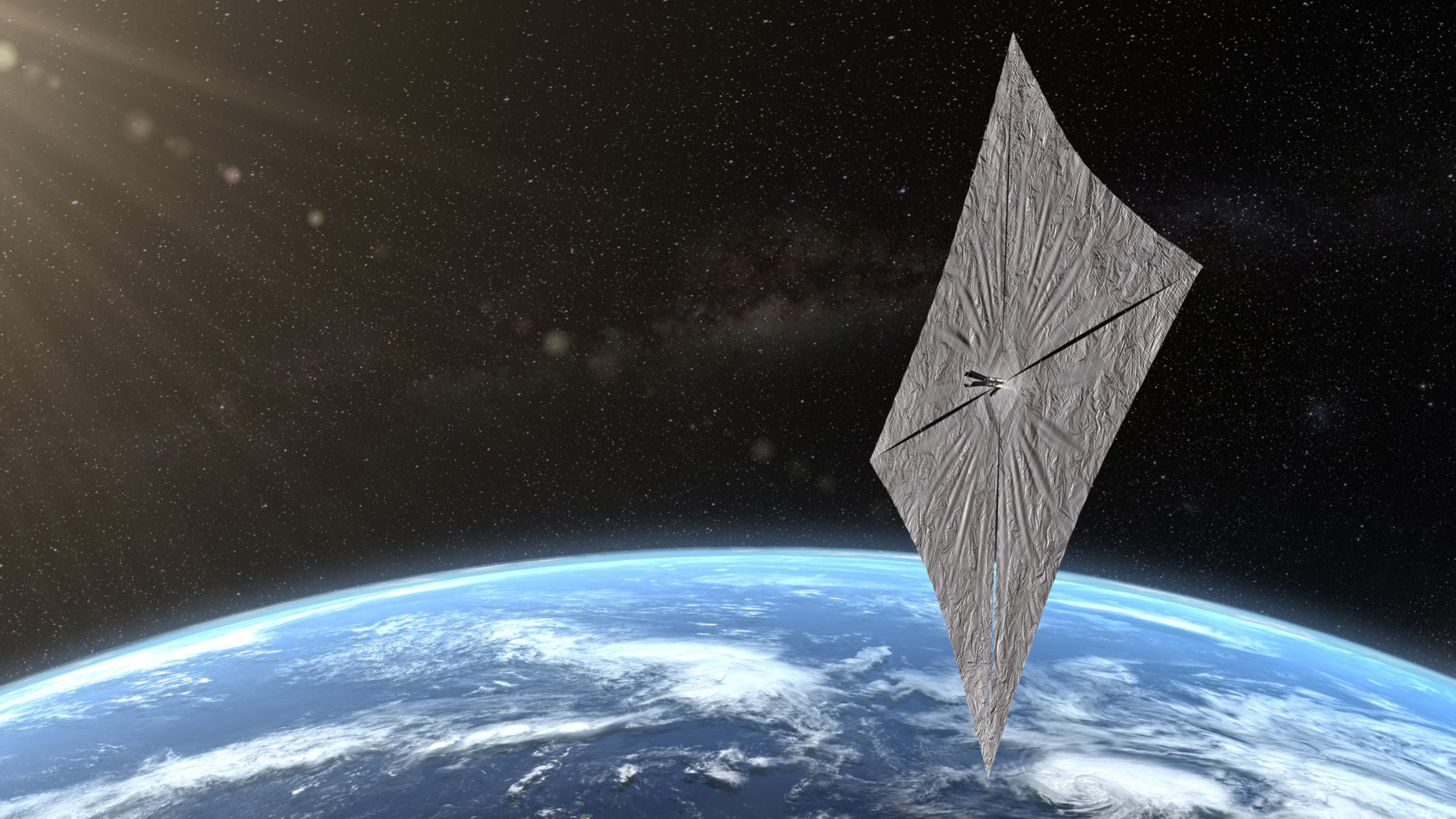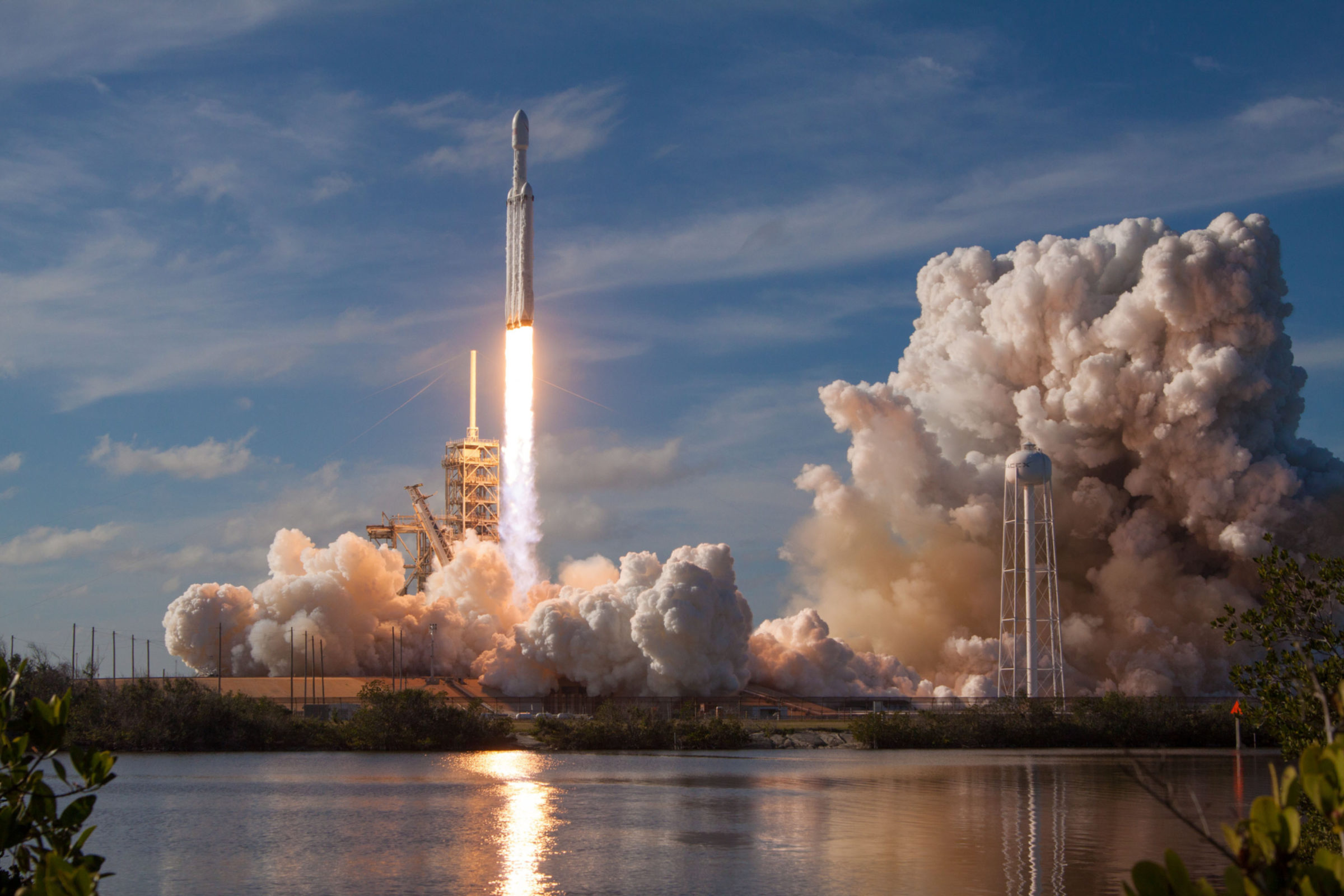Jason Davis • Oct 29, 2018
LightSail 2 launch pushed to early 2019
The Planetary Society's LightSail 2 spacecraft will spend the remainder of 2018 on Earth.
The loaf-of-bread-sized satellite, which will unfurl a 32-square-meter solar sail to harness sunlight for propulsion, was previously scheduled to hitch a ride to orbit aboard a SpaceX Falcon Heavy rocket no earlier than Nov. 30. An Air Force official now tells The Planetary Society a new "initial launch capability" is being assessed and is expected to fall in early 2019.
LightSail 2 is one of 25 spacecraft aboard a Falcon Heavy rideshare mission called STP-2 — the 'STP' stands for the Air Force’s Space Test Program. The primary payloads are six weather and climate satellites called COSMIC-2 and a space radiation experiment named DSX. The Falcon Heavy's upper stage engine will re-light multiple times to deliver all 25 spacecraft into three different orbits.
Once in space, LightSail 2 will attempt to demonstrate solar sailing as a method of propulsion for small, standardized satellites known as CubeSats. The spacecraft will do this by turning its reflective solar sail against the sun's rays each orbit. Solar photons have no mass, but they have momentum, and will give LightSail 2 a gentle push as they bounce off the sail.
The push is no stronger than the weight of a paperclip, but it is continuous, and will raise the spacecraft’s orbit by up to several hundred meters each day.
LightSail 2 will ride to orbit nested inside the rectangular Prox-1 spacecraft, which measures just 61 centimeters on its longest side. The Falcon Heavy will drop Prox-1 and LightSail into a 720-kilometer-high circular orbit, and after 7 days, Prox-1 will deploy LightSail 2 into space.

LightSail 2 was installed in Prox-1 back in March at the Air Force Research Laboratory in Albuquerque, New Mexico. The vehicles underwent vibration testing in August, but a post-test inspection showed LightSail's batteries had drained more than was desired. Because of uncertainties in the launch date, engineers opted not to re-integrate LightSail in Prox-1 so LightSail’s batteries could be periodically charged.
As a result of the latest mission delay, mission managers opted to fly LightSail 2 back to Cal Poly San Luis Obispo, where it can be accessed more easily. The spacecraft's batteries will continue to get topped off between now and launch.
SpaceX is planning two Falcon 9 launches in November; both from Kennedy Space Center's Launch Complex 39A. The pad recently received a crew access arm for upcoming astronaut flights to the International Space Station, which could begin next year.
The triple-rocket Falcon Heavy, which also lifts off from pad 39A, has not flown since its test mission in February 2018. STP-2 is one of two Falcon Heavy missions expected to launch next year; the other is the Arabsat 6A communications satellite. The company has three more Falcon Heavy customers booked for flights after that, including a classified Air Force payload.
Let’s Go Beyond The Horizon
Every success in space exploration is the result of the community of space enthusiasts, like you, who believe it is important. You can help usher in the next great era of space exploration with your gift today.
Donate Today

 Explore Worlds
Explore Worlds Find Life
Find Life Defend Earth
Defend Earth


